Did you know that 50 million Americans suffer from sleep disorders? Light therapy is proven to regulate your circadian rhythm, providing an effective, natural treatment for sleep disorders and promoting deeper, more restful sleep. Discover how this simple technique can transform your nights and boost your daytime energy.
If you've struggled with sleep problems, you might be closer to relief than you think. In this comprehensive guide, you'll discover how light therapy for better sleep works, its benefits for sleep disorders, scientific evidence supporting its use, top light box devices, and tips for safe, effective home therapy.
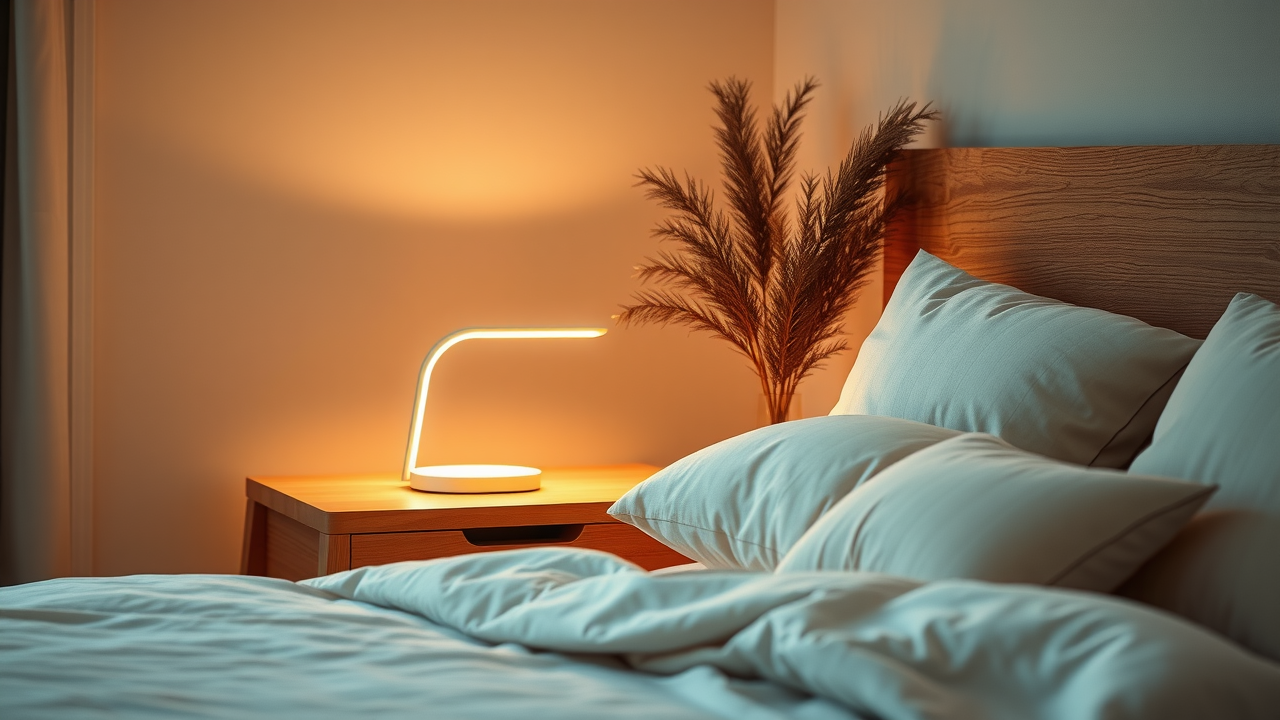
Did You Know? The Prevalence of Sleep Disorders in America
Did you know that 50 million Americans suffer from sleep disorders? Light therapy is proven to regulate your circadian rhythm, providing an effective, natural treatment for sleep disorders and promoting deeper, more restful sleep. Discover how this simple technique can transform your nights and boost your daytime energy.
Sleep issues are incredibly common and affect nearly one in five Americans. Millions battle insomnia, circadian rhythm sleep disorder, and other sleep disturbances that disrupt not only their nights but their daily energy, focus, and mood. Disrupted sleep increases the risk of chronic illnesses, weakens your immune system, and even compromises your mental wellbeing. Because traditional treatments for sleep disorders — like medication — often come with side effects, many are seeking natural alternatives.
This rising interest is why light therapy, a non-invasive method proven to support circadian rhythms, has come into the spotlight. People across the country are discovering how smart light exposure can help them fall asleep faster, regulate their body’s “sleep clock,” and wake up feeling genuinely refreshed.
The broad appeal of light therapy for better sleep lies not just in its effectiveness but also in its simplicity and minimal risk. If you're tired of feeling sluggish or struggling to find a solution that aligns with your lifestyle, understanding how light can be your ally is a crucial step toward reclaimed rest. Let’s unpack how this science-backed approach can make a meaningful difference for those who have tried almost everything else.
Understanding Light Therapy for Better Sleep

What Is Light Therapy?
At its core, light therapy is a treatment that uses exposure to artificial bright light, often delivered through a light box, to mimic natural sunlight and reset your circadian rhythm. Typically delivered through a light box or a specially designed lamp, this treatment helps reset your body’s circadian rhythm, the internal clock that governs your sleep-wake cycle. While light therapy might sound technical, the concept is simple: by sitting near a device that emits a controlled amount of bright light, you influence your body’s production of melatonin and other hormones that regulate when you feel tired or alert.
Light boxes are typically used for short sessions of 20 to 45 minutes, usually in the morning, to maximize the effects of light therapy on sleep and circadian rhythm regulation. These devices deliver a light intensity significantly stronger than normal indoor lighting, without exposing you to UV rays. Light therapy is commonly prescribed for those with sleep disorders such as insomnia, circadian rhythm sleep disorders, and even seasonal affective disorder. The best part is that integrating light therapy into your routine is straightforward and does not require significant changes to your daily life.
How Light Therapy Works for Sleep Disorders and Circadian Rhythm
Our bodies rely on cues from the surrounding environment — especially light and dark — to regulate processes like falling asleep and waking up. When you’re exposed to bright light at the right times, usually in the morning, it signals your brain to suppress melatonin production and helps you wake up feeling refreshed. Conversely, insufficient or poorly timed light exposure can lead to sleep disturbances or rhythm sleep disorders, especially for shift workers, travelers, or those living in areas with extreme seasonal changes.
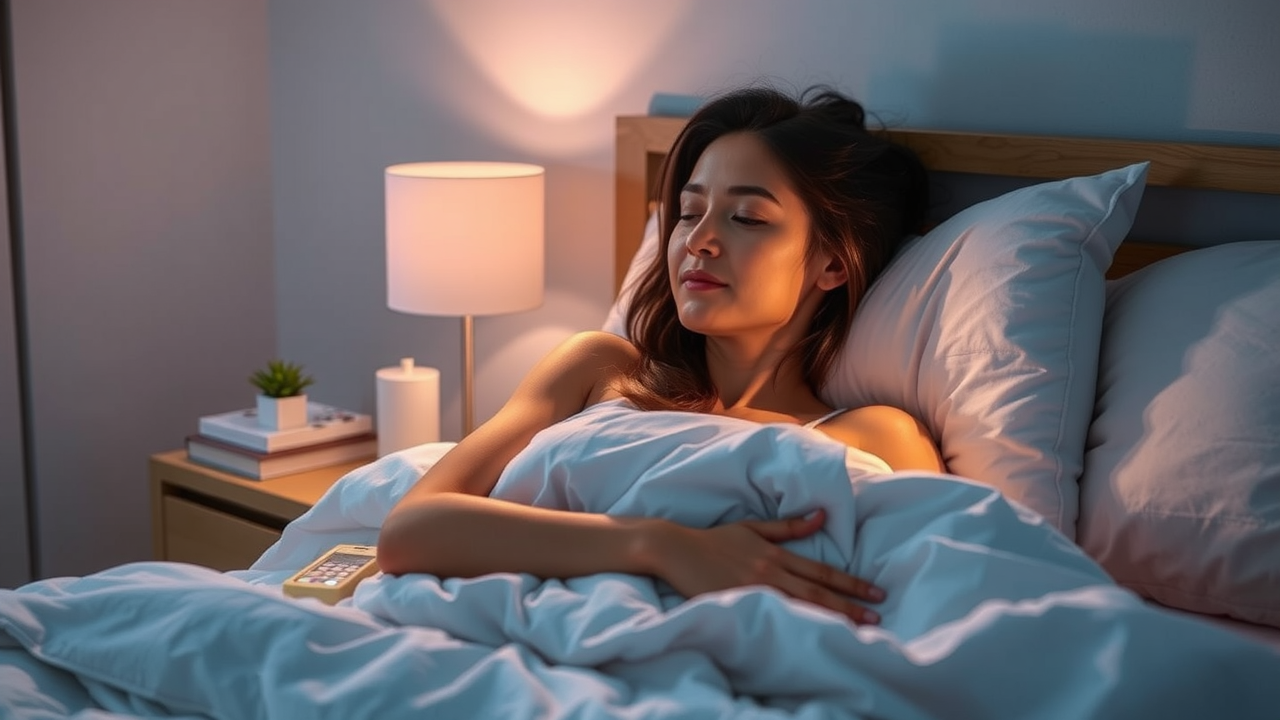
For those interested in optimizing their daily routines for better overall health, incorporating gentle movement can also play a role in supporting restful sleep and joint comfort. Discover practical strategies in these essential walking warm up exercises for joint relief, which can complement your light therapy regimen and promote holistic wellness.
Scientific Evidence: The Effects of Light Therapy on Sleep Problems
Numerous scientific studies and systematic reviews have validated the benefits of using light therapy on sleep. For instance, research published in leading journals shows that regular therapy sessions with a bright light box can decrease the time it takes to fall asleep and help regulate rhythm sleep disorders. A 2021 systematic review found that morning exposure to bright light significantly improved sleep quality among participants suffering from both sleep problems and circadian rhythm sleep disorders.
Clinical trials also demonstrate that bright light therapy can be as effective as prescription sleep aids, minus the side effects. In fact, many patients using light therapy reported not only improved nighttime rest but also better mood, increased daytime alertness, and reduced symptoms of seasonal affective disorder. These findings are paving the way for light therapy to become a first-line intervention for sleep disturbances, especially as awareness and understanding continue to grow.
Summary of Major Studies and Systematic Reviews on Light Therapy for Sleep Disorders
Study |
Population |
Key Findings |
Light Therapy Type |
|---|---|---|---|
Systematic Review (2021) |
Adults with insomnia & rhythm sleep disorder |
Improved sleep onset time & sleep quality |
Bright light therapy (morning) |
RCT (2019) |
Shift workers |
Reduced sleep disturbances, better alertness |
Light box exposure (pre-shift) |
META Analysis (2017) |
Jet lag travelers |
Faster circadian adaptation |
Bright light sessions (a.m. & p.m.) |
Case Study (2023) |
Seasonal affective disorder |
Significant symptom reduction, improved sleep |
Light therapy lamp (daytime) |
Circadian Rhythm and Its Link to Restful Sleep
The Role of Circadian Rhythm in Rhythm Sleep and Sleep Disorders
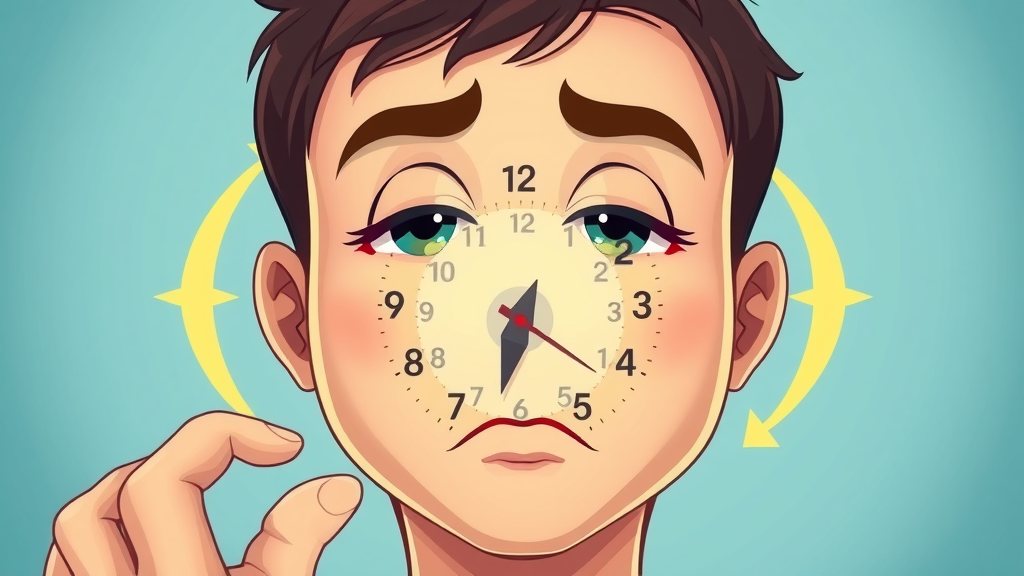
The circadian rhythm is your body’s 24-hour internal clock, controlling sleep-wake cycles, hormone release, and many other vital functions. This “master clock” depends on environmental light and darkness to stay synchronized. When your circadian rhythms are misaligned — due to shift work, poor sleep habits, or even jet lag — you may face rhythm sleep disorders such as delayed sleep phase disorder or non-24-hour sleep-wake disorder. These disruptions manifest as chronic sleep problems, difficulty falling asleep, and feeling unrested, regardless of how long you spend in bed.
Light is the most powerful environmental cue your circadian rhythm responds to. When you control light exposure, especially with a structured therapy session using a light box, it’s possible to re-train your internal clock. For people with sleep disorders or anyone whose sleep is frequently disrupted, light therapy provides a science-backed method to realign your natural sleep-wake cycle.
Bright Light and Its Role in Regulating Circadian Rhythm Sleep
Exposure to bright light therapy in the morning helps suppress melatonin production, the hormone that induces sleepiness, while boosting serotonin levels to increase alertness and energy throughout the day. This is why using bright light therapy early in the day is a cornerstone treatment for circadian rhythm sleep disorders. The right type of light source and exposure schedule can help you fall asleep earlier or stay awake during the day — crucial for shift workers or those struggling with seasonal affective disorder.
The effects of light therapy are supported by decades of research. Morning sessions with a light therapy box can improve daytime performance, stabilize mood, and help maintain a regular sleep timetable. By harnessing these natural biological responses to light, you can regain better control over your daily energy and nighttime rest.
Effects of Light Exposure on Rhythm Sleep Disorders
Not all light is created equal — the timing and intensity of light exposure are critical factors in treating rhythm sleep disorders. Evening exposure to bright light or blue-rich light can actually delay sleep onset, while warm, dim light may help signal your body that it’s time to wind down. *Properly timed light therapy* can address the root causes of rhythm sleep disorders by nudging your circadian rhythm toward a more typical pattern. It’s this precision that makes light therapy an effective, non-drug option for people who want to reset their sleep schedule and beat both chronic and short-term sleep disturbances.
Light Therapy Devices: Choosing the Right Tool
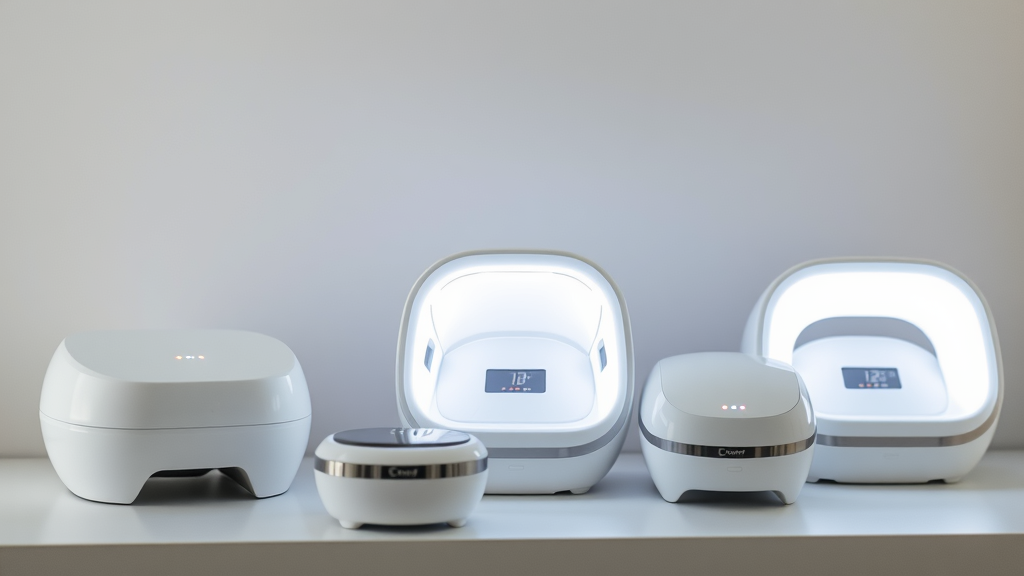
Understanding Light Boxes for Bright Light Therapy
The light box is the mainstay device for light therapy for better sleep, delivering bright light therapy that helps regulate circadian rhythm sleep disorders and improve overall sleep quality. These devices are specially engineered to emit a high intensity of light (often between 2,500 and 10,000 lux) while filtering out harmful UV rays. Most light boxes offer adjustable brightness and mimic the effects of natural sunlight, which is why they’re so effective for shifting your circadian rhythm. Unlike your regular lamp or overhead light, a therapy light box offers a targeted, measured, and safe form of light exposure — crucial for treating circadian rhythm sleep disorders, seasonal affective disorder, and jet lag.
When using a light box, you typically position it 12 to 24 inches from your face and sit with your eyes open (but not staring directly into the light). Early morning sessions, lasting 20 to 30 minutes, are most common for combating rhythm sleep disorder. Many people find that reading, eating, or working during the session provides an easy way to build light therapy into their routine while addressing their sleep disorders.
Features to Look For in a Quality Light Therapy Device
Choosing the best light therapy box matters for both safety and effectiveness. Consider the following when evaluating your options:
Light intensity: Look for devices that provide at least 10,000 lux of light for maximum effect with minimal exposure time.
Spectrum: Full-spectrum (white) or blue-enriched lights can be effective in the morning; red or amber lights are best for evening use to avoid circadian disruption.
Timer: Built-in timers assist with session management to prevent overexposure.
Safety certifications: Ensure the device filters harmful UV rays and is medically certified for therapeutic use.
Other factors such as adjustable settings, portability, and size can also impact daily use. Always prefer products from trusted manufacturers with positive user reviews and solid clinical backing. Consult your healthcare provider before purchasing if you have sensitive eyes or an underlying medical condition.
Effects of Light Therapy on Sleep—What the Research Shows

Benefits for Sleep Disorders and Sleep Problems
The list of effects of light therapy on sleep is impressive. Regularly scheduled light therapy sessions can significantly improve sleep quality, shorten the time it takes to fall asleep, and extend the duration of uninterrupted sleep for those with sleep disorders. By directly influencing melatonin and serotonin cycles, light therapy tackles the root causes of many sleep disorders, including insomnia and delayed sleep phase syndrome. People using light therapy for better sleep report not only an easier time falling asleep but also waking refreshed and energized.
Both clinical trials and systematic reviews have confirmed that light therapy is especially effective for individuals whose sleep problems stem from shift work, seasonal affective disorder, or poorly regulated circadian rhythms. What sets light therapy apart from other treatments is that it is non-invasive, medication-free, and highly adaptable to your lifestyle.
Evidence for Bright Light Therapy in Circadian Rhythm Sleep Disorder
The strongest research evidence exists for the use of bright light therapy in treating circadian rhythm sleep disorders. A 2023 Sleep Medicine Review concluded:
"Light therapy has been shown to significantly improve sleep quality in individuals with various rhythm sleep disorders." — Sleep Medicine Review, 2023.
Not only is bright light therapy effective, but it’s also practical for daily use and easy for most people to integrate into their morning or evening routine. As awareness of its benefits grows, more health professionals recommend it as part of a comprehensive treatment plan for chronic sleep problems and related affective disorders.
Practical Guide: How to Use Light Therapy for Better Sleep
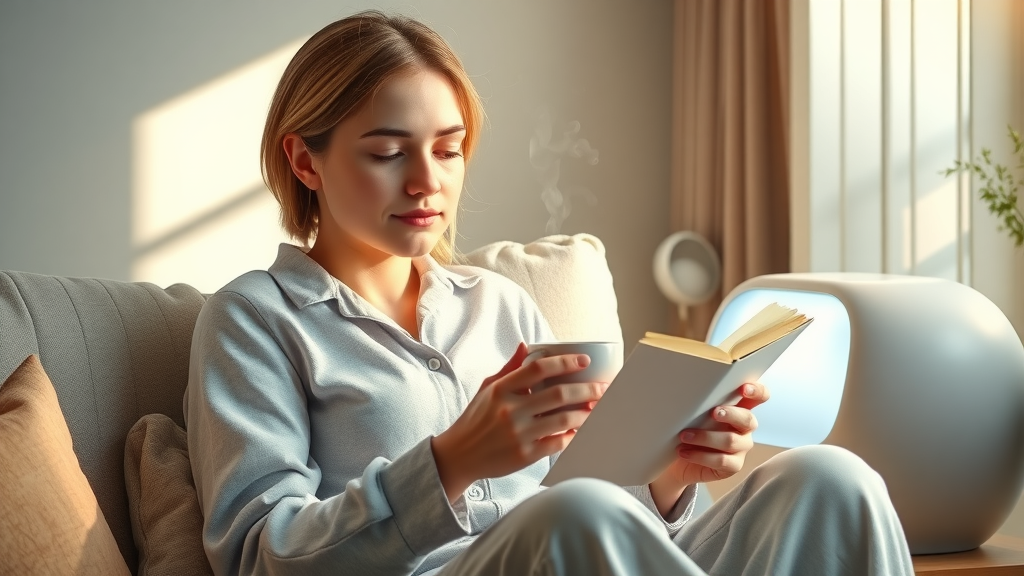
Step-by-Step: Incorporating Light Therapy Into Your Daily Routine
Integrating light therapy into your routine doesn’t require drastic changes. Here’s a simple way to get started:
Choose the right device: Select a medically certified light box, ideally one that delivers 10,000 lux, and meets your safety and feature requirements.
Schedule your sessions: For most rhythm sleep disorders, use light therapy in the early morning just after waking up. Sit about 12–24 inches from the device.
Be consistent: Make light therapy a daily habit, especially during seasons when natural sunlight is limited. Read, eat, or work while sitting near the light source for about 20–30 minutes.
Track your progress: Maintain a sleep journal or use a tracking app to monitor improvements in how quickly you fall asleep, overall sleep quality, and daytime energy levels.
Improvements may be noticeable within a week, but for some, it can take a few weeks of regular sessions to fully recalibrate your circadian rhythm. Don't forget to speak with your healthcare provider if you have questions or underlying health concerns.
Optimal Timing and Duration for Bright Light Therapy
When it comes to maximizing the effects of light therapy on sleep, timing is everything. Morning exposure to bright light helps reset your circadian rhythm, making it easier for you to fall asleep at night and wake up feeling restored. For most people, the optimal window for a therapy session is within an hour of waking up. Sessions typically last 20–30 minutes at 10,000 lux, though those with milder symptoms might do well with lower intensity and slightly longer or shorter exposure times.
If your issue is delayed sleep phase disorder or jet lag, adjust your light therapy schedule to correspond to your target wake time in your destination's time zone. For those working night shifts, a session before work can help with alertness during the shift, while using red or amber light at night can prevent circadian rhythm disruption.
Use light therapy in the morning to reset circadian rhythms and boost daytime alertness.
Be consistent—daily light therapy produces the best results for rhythm sleep disorders.
Place the device at eye level, 12–24 inches away, and never look directly at the light source.
Targeted Uses of Light Therapy: From Jet Lag to Seasonal Affective Disorder
Using Light Therapy for Jet Lag and Circadian Rhythm Sleep Disorders
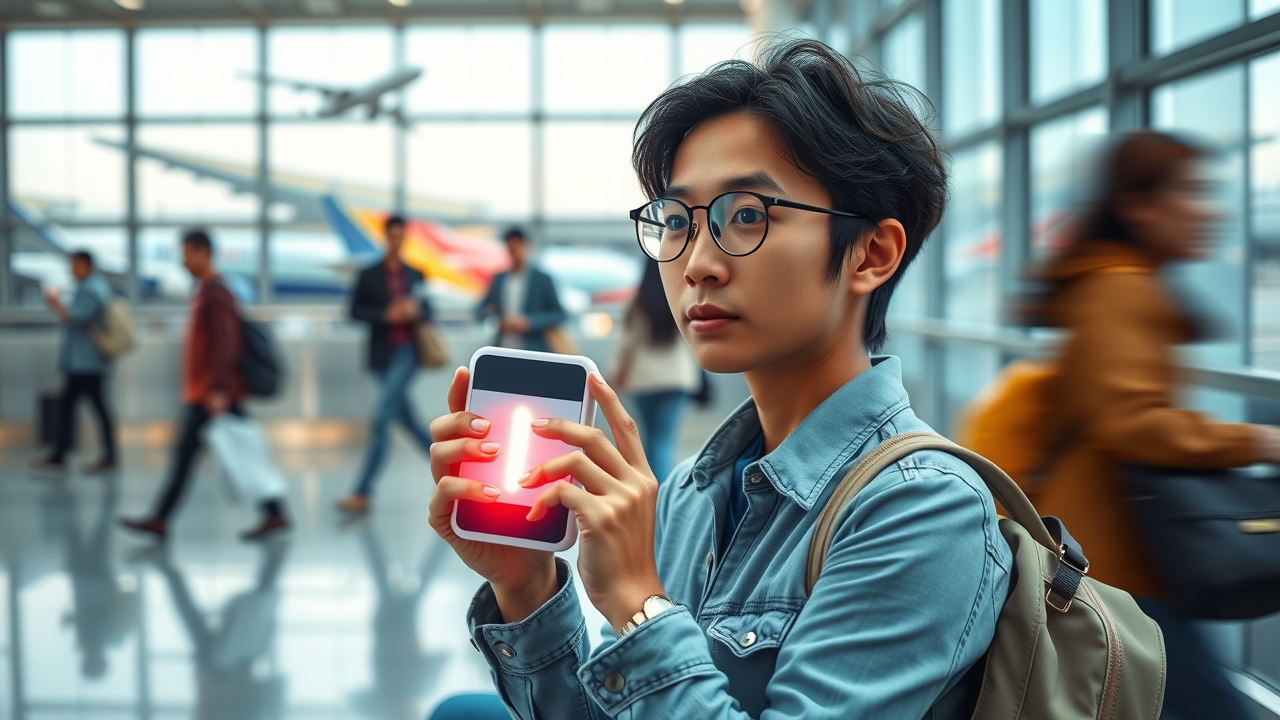
One of the highly effective applications of light therapy is treating jet lag and other circadian rhythm sleep disorders by helping reset the internal body clock through strategic light box sessions. Jet lag occurs when your internal clock is out of sync with your current time zone. Strategic sessions with a compact light box, especially during long-haul travel, can hasten your body’s adjustment and minimize grogginess, insomnia, and daytime fatigue. Athletes, flight crews, and frequent travelers have all reported smoother transitions and better sleep after using light therapy to combat the effects of rapid time zone changes.
Correctly timed bright light exposure before, during, and after flights — while avoiding evening exposure — can reset your circadian rhythm in alignment with your new local time, reducing symptoms and speeding recovery.
Addressing Seasonal Affective Disorder and Other Affective Disorders
Seasonal Affective Disorder (SAD) is a form of depression associated with the changing seasons, most commonly the shorter, colder days of fall and winter. For those affected, light therapy serves a dual purpose: it not only lifts mood and energy but also improves sleep quality by aligning circadian rhythms with the available daylight. Light therapy is widely recognized as a first-line intervention for both SAD and related affective disorders because it helps regulate both sleep and mood.
Studies show that 70% of people with seasonal depression notice substantial improvement in symptoms after just a few weeks of daily light therapy. This benefit, combined with its non-invasive nature, has made light therapy a staple in mental health and sleep medicine.
Potential Side Effects and Safety Considerations

Understanding Side Effects of Light Therapy
While light therapy is generally safe for most users, some may experience minor side effects such as headaches or eye strain, especially during initial sessions or if the light box intensity is too high. Common reactions include mild headaches, eye strain, or irritability, especially if the light is too intense, used for too long, or if you have sensitive eyes. Rarely, some individuals may experience agitation or worsened sleep disturbances, particularly if therapy is used too late in the day.
Most side effects are mild and disappear when the session duration or intensity is reduced. However, it’s important to follow manufacturer guidelines and schedule your therapy in accordance with medical advice, particularly if you have a pre-existing eye condition or a disorder like bipolar disorder, which may be sensitive to rapid changes in light exposure.
Who Should Consult a Professional Before Starting Light Therapy?
Although light therapy for better sleep is safe for most people, certain groups should consult with a healthcare provider first. This includes individuals with:
Chronic eye diseases (e.g., glaucoma, cataracts, retinal disorders)
Active or history of mood disorders such as bipolar disorder
Use of medications that increase sensitivity to light
Photosensitive skin conditions
Children and pregnant women (consult with pediatrician or OB/GYN)
Professional guidance helps tailor light therapy’s intensity, timing, and duration to fit your circumstances and minimize risks.
People Also Ask: Light Therapy for Better Sleep
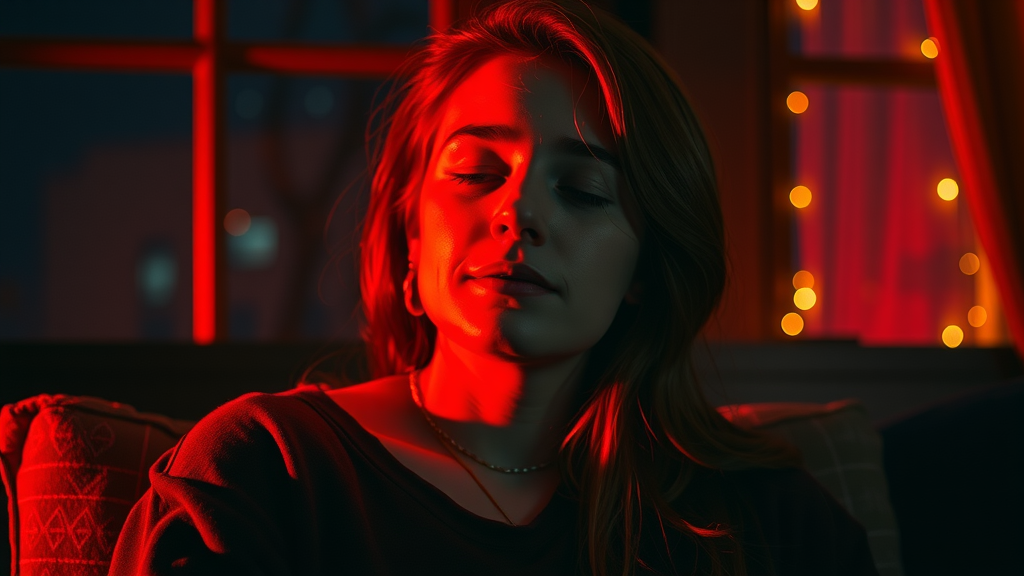
Does light therapy improve sleep?
Answer: Yes, numerous studies and systematic reviews indicate that light therapy improves sleep quality, helps regulate circadian rhythm, and is effective in treating several sleep disorders.
What color light therapy is best for sleep?
Answer: Red and warm amber lights are generally regarded as best for night-time light therapy, as they minimally disrupt circadian rhythm compared to blue or white light.
Is red light therapy ok to do at night?
Answer: Yes, red light therapy is safe to use at night and is considered helpful for promoting relaxation and improving sleep onset.
Does NASA have red light therapy for sleep?
Answer: NASA uses red light therapy to improve sleep and recovery for astronauts, validating its effectiveness in challenging environments.
FAQs About Light Therapy for Better Sleep
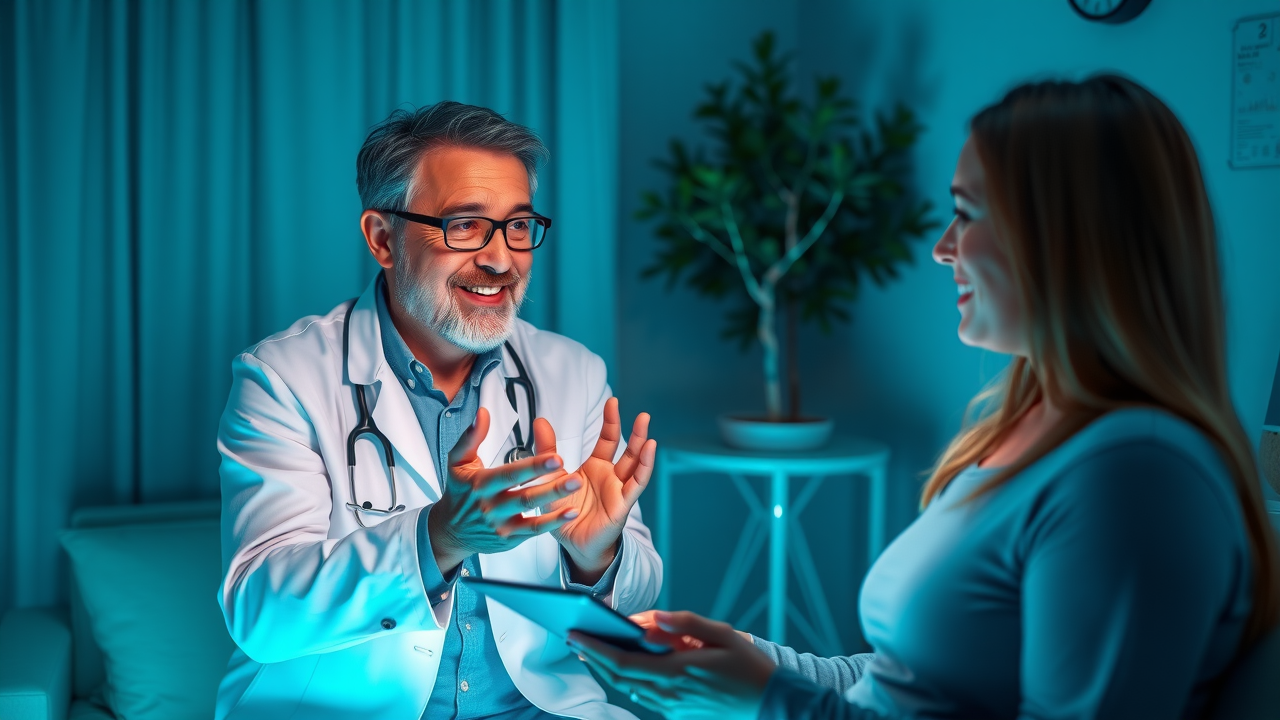
How soon can I see results from light therapy for sleep problems?
Many people notice improvements in sleep quality and daytime alertness within the first week of daily light therapy. For chronic sleep problems or severe circadian rhythm sleep disorders, it may take several weeks of consistent therapy sessions for full benefits to emerge.Can light therapy help with insomnia and affective disorders?
Yes. Light therapy has been shown to be a highly effective treatment for both insomnia and affective disorders, especially when these issues are related to circadian rhythm disruption or seasonal mood changes. It is non-invasive and offers a safer alternative to medication for many.What are the main effects of light therapy for circadian rhythm sleep disorder?
The main effects include better alignment of the body’s internal clock with natural day-night cycles, reduced sleep onset latency, improved sleep maintenance, and improved quality of life. Light therapy can also enhance mood and reduce daytime sleepiness in individuals with rhythm sleep disorders.
Conclusion: Embrace Light Therapy for Better Sleep
"Adopting light therapy for better sleep is a science-backed decision that can transform your health, mood, and daily productivity."
Take the First Step Towards Restful Nights
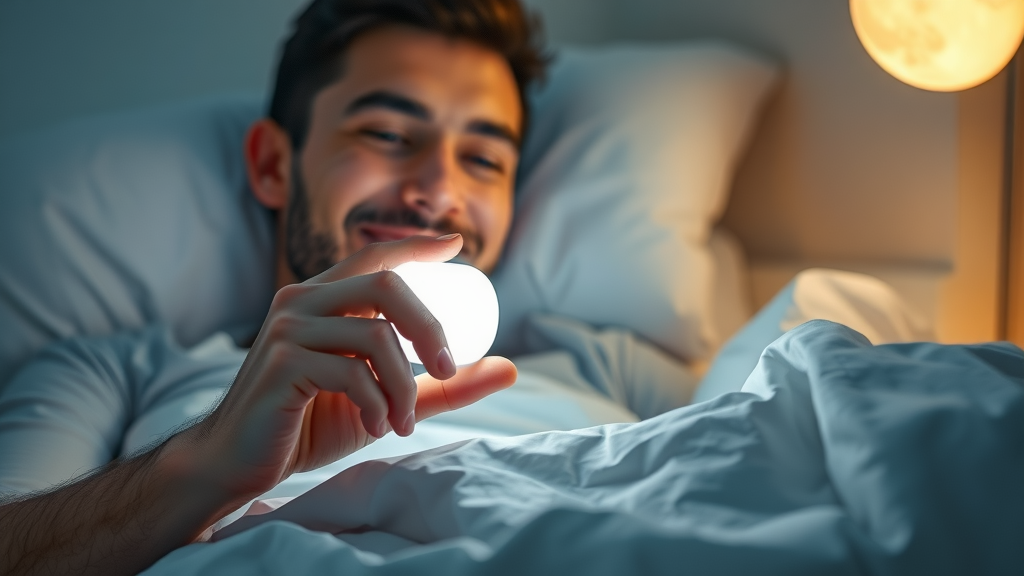
Research trusted light therapy devices
Consult your healthcare provider
Start improving your sleep problems today with light therapy for better sleep
Embrace the power of light therapy—a simple yet scientifically proven path to unlocking restful nights and vibrant days.
If you’re inspired to take your wellness journey even further, consider how your environment and lifestyle choices can amplify the benefits of light therapy. Exploring the transformative impact of rural living on health and daily habits can open new doors to holistic well-being. For a deeper dive into how communities are reimagining wellness and creating healthier lifestyles, discover the insights in this guide to wellness reimagined in rural North Carolina. Let your pursuit of better sleep be just the beginning of a more vibrant, balanced life.
Sources
National Institutes of Health – https://ncbi.nlm.nih.gov/pmc/articles/PMC6950541/
Sleep Medicine Reviews – https://journals.sagepub.com/home/smr
Light therapy has emerged as a promising non-pharmacological approach to improving sleep quality by regulating the body’s circadian rhythm. According to the Sleep Foundation, light therapy involves exposure to artificial light that mimics natural sunlight, helping to reset the internal body clock and alleviate sleep disorders such as insomnia and circadian rhythm sleep disorders. (sleepfoundation.org)
Healthline further explains that light therapy can be particularly beneficial for individuals experiencing sleep onset insomnia, where difficulty falling asleep is linked to disruptions in the circadian rhythm. By using a light box emitting bright light, typically in the morning, individuals can advance their internal clock, promoting earlier sleep onset and improved sleep quality. (healthline.com)
For those interested in practical applications, the Lumie Bodyclock Glow 150 is a sunrise simulation alarm clock designed to enhance sleep and morning wakefulness by gradually increasing light intensity, thereby supporting natural circadian rhythms. This device offers customizable sunrise and sunset simulations, aiming to provide a more natural wake-up experience. (tomsguide.com)
Incorporating light therapy into your daily routine can be a simple yet effective strategy to combat sleep disturbances. By understanding and utilizing the principles of light exposure, individuals can take proactive steps toward achieving more restful and restorative sleep.
 Add Row
Add Row  Add
Add 


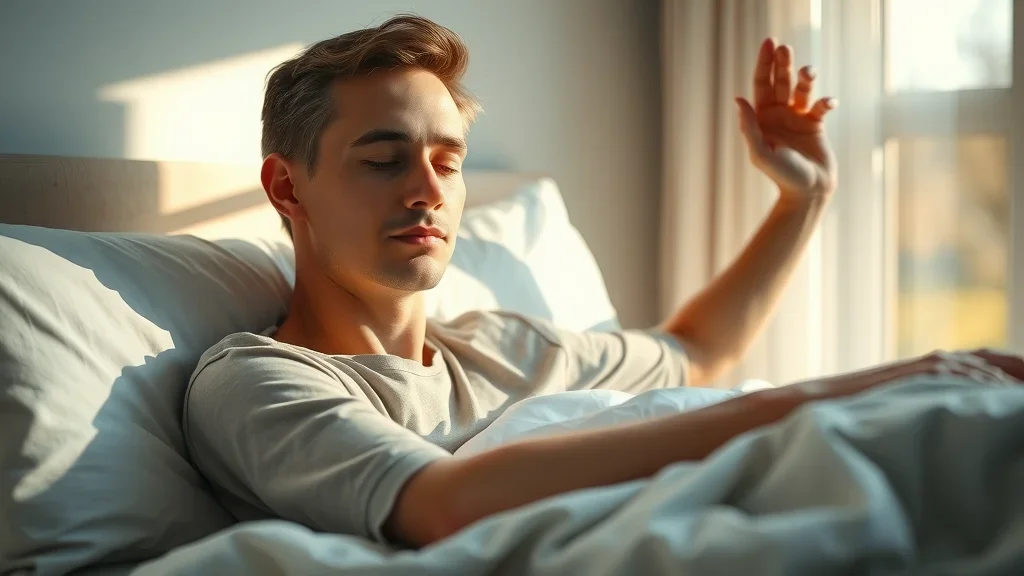
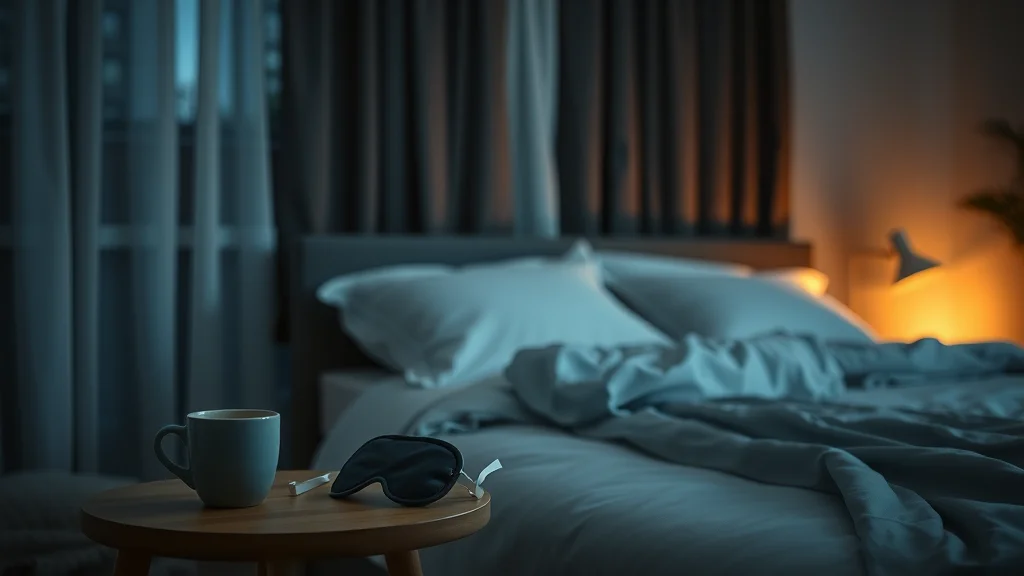
Write A Comment